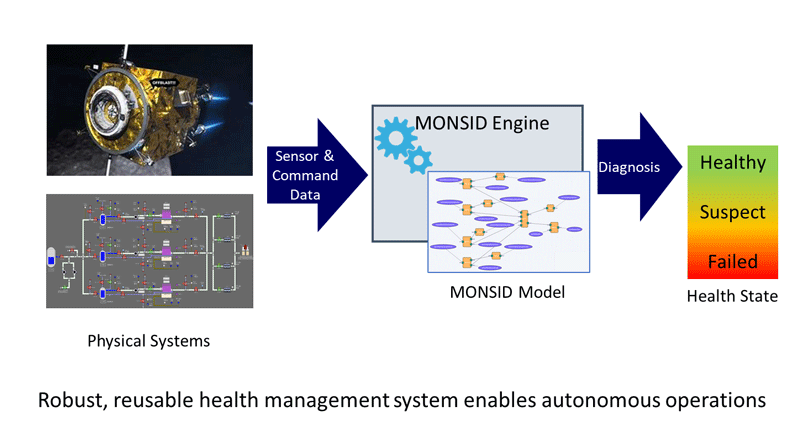NASA SBIR Phase I 2020 Project: Model-based Fault Diagnosis for Autonomous Propellant Management
March 1, 2021
This was a 6-month SBIR Phase I project with Kennedy Space Center that included early technical development to determine the feasibility of the innovation.

Why the Innovation is Important to NASA
Okean Solutions responded to Topic H10.02 Autonomous Operations Technologies for Ground and Launch Systems.
This topic covers Autonomous Operations Technologies (AOT) that support activities performed by rocket engine test facilities, propellant servicing systems, and processing and launch of vehicles and payloads. These technologies will also be required for extended surface operations on the Moon and Mars.
AOT performs functions such as systems and components’ fault prediction and diagnostics, anomaly detection, fault detection and isolation, and enables various levels of autonomous control and recovery from faults, where recovery may include system repair and/or reconfiguration.
Our Approach
Okean’s response addressed aspects related to Autonomous Propellant Management (APM), which requires unattended or minimally attended storage, transfer, monitoring, and sampling of cryogenic propellants, or other propellants use in launch systems. APM includes pre-planned nominal processes, such as vehicle fill and drain, as well as contingency and off-nominal processes, such as emergency safing, venting and system reconfiguration.
We proposed our MONSID® technology in support of APM. MONSID supports autonomous operations technology requirements to reduce operations and maintenance costs and minimizes human in the loop intervention. Applied to propellant management and test facilities, the MONSID technology can provide a critical component for autonomous health management of these systems.
Project Objectives
Phase I focused on developing and validating MONSID models of propellant management system hardware to be monitored.
Objectives intended to expand the application domain and improve MONSID fault management technology include:
- Assessing the appropriateness of MONSID as applied to propellant management system fault management.
- Determining the extent of testing required to verify MONSID models of propellant management systems, thus evaluating model completeness and correctness.
- Adding validated components and models from this effort to fault management inventory, allowing reuse to decrease labor and development time for future propellent management systems.
Accomplishments
The Phase I program successfully achieved objectives by completing the following:
- Identified a suitable target propellant loading system based on the SPLS (Simulated Propellant Loading System) facility at Kennedy Space Center
- Designed and developed code for new MONSID components that model target system hardware units
- Improved modeling technique to accommodate discontinuities common to fluid flow models
- Developed a working MONSID model of the target Propellant Loading System (PLS)
- Created Matlab/Simscape simulations to generate data for component-level and model-level testing
- Developed configurable controller to generate data for slow-fill, fast-fill and terminal operational phases
- Successfully validated the working MONSID model with simulated nominal data representing slow/fast fill and terminal phases of the PLS
Potential Mission Infusion
MONSID FM software could be used for the following:
- Ground-based I&T tool for Artemis I-II
- Health assessment for autonomous propellant management and surface operations for Artemis III and Base Camp
- Health assessment component of the Gateway Power and Propulsion Element (PPE) autonomy architecture
- Health assessment for Mars surface missions including In-Situ Resource Utilization (ISRU) propellant manufacture, storage, and transfer; habitat power management

